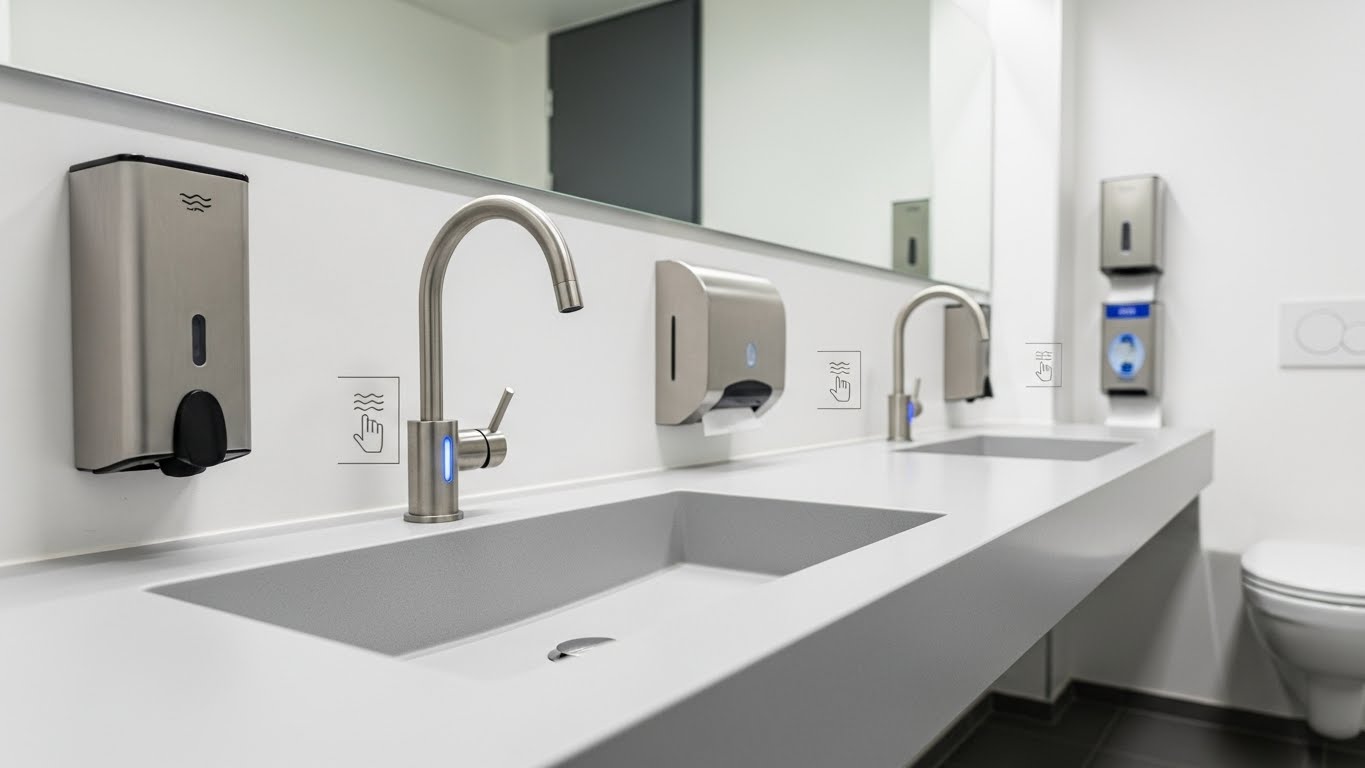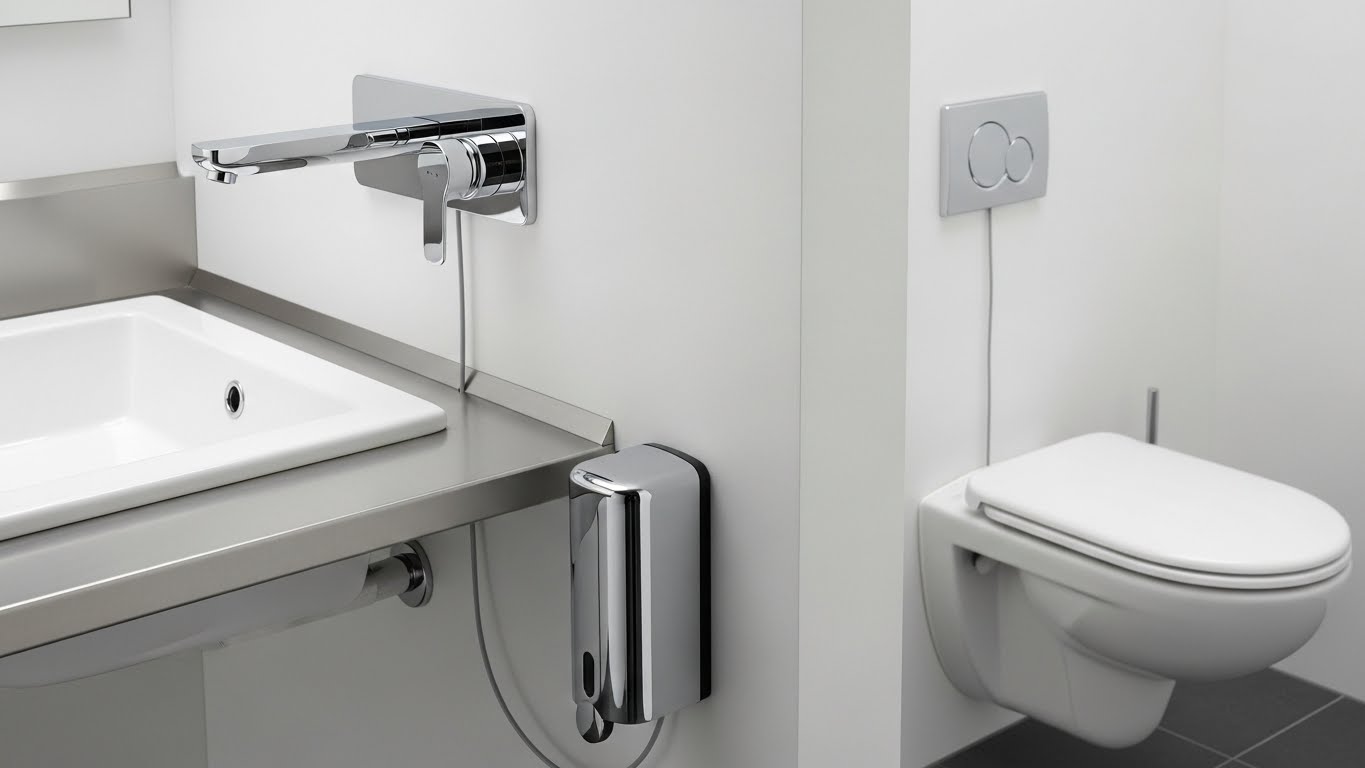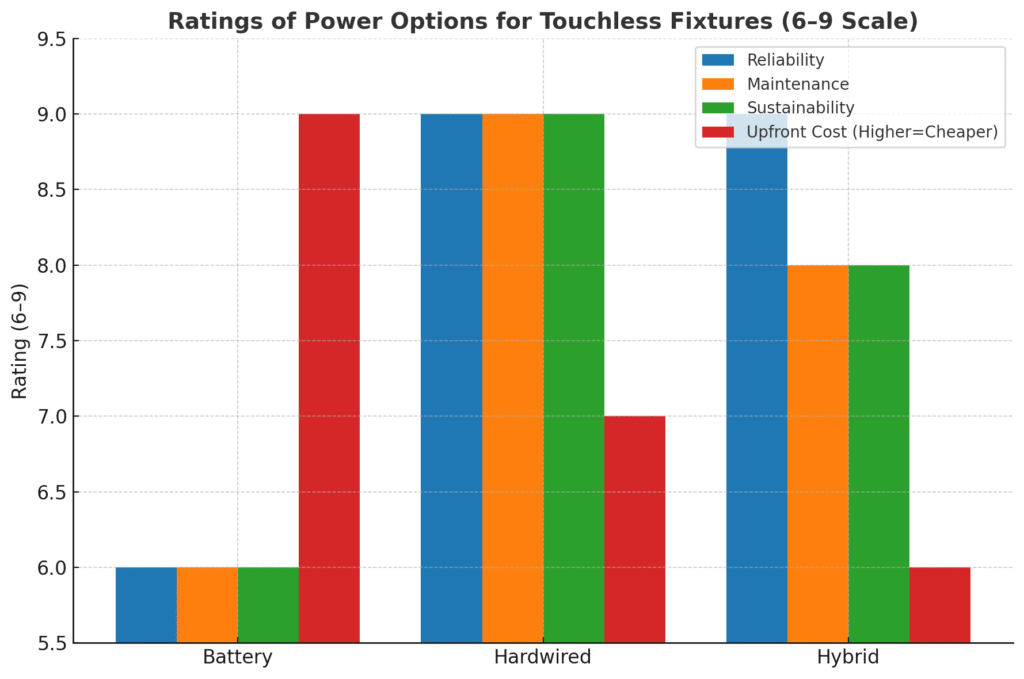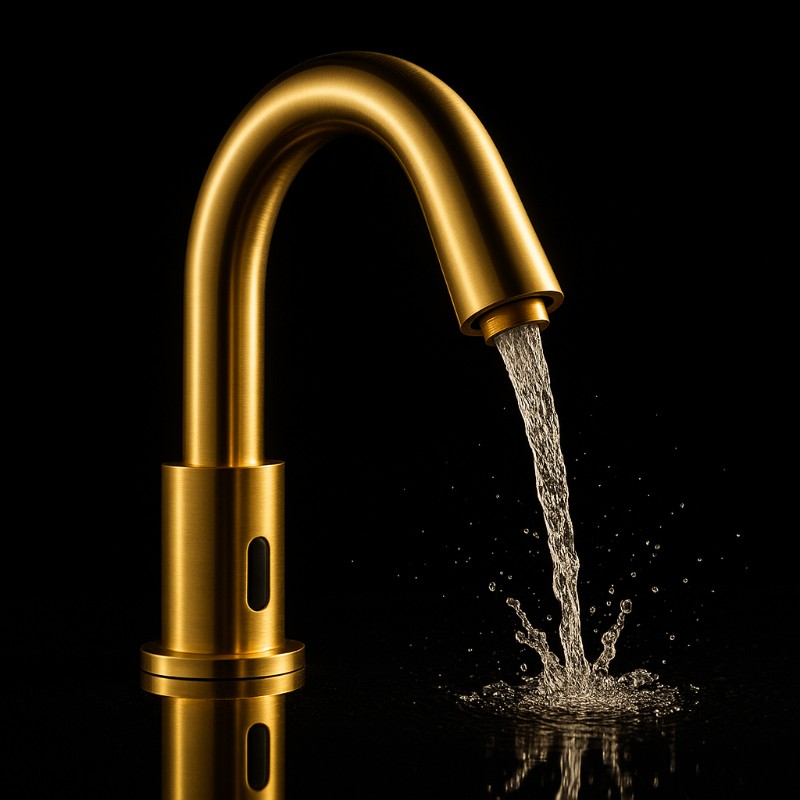Power strategy • Maintenance • Sustainability • High-traffic performance
Touchless restroom fixtures have become the new standard in commercial buildings. In airports, hospitals, colleges, and shopping malls, people benefit from touch-sensitive faucets/flush valves due to increased cleanliness, reduced water wastage, and improved functionality. However, of perhaps even greater significance in the selection of touch-sensitive products is the type of power being utilized by these products.
In heavy traffic environments, whether a system should be battery-driven, hardwired, or hybrid can be a determinant for long-run performance, maintaining costs, or sustainability efforts. Now, let us discuss the different options available, contrasting them in retrofit, new installs, and LEED-certified projects.

Battery-Powered Fixtures
Battery-powered touchless fixtures are the most common solution for quick upgrades. They run on batteries that can be replaced, like AA, 9V, or lithium packs. These batteries can last anywhere from 1 to 5 years, as long as properly cared.
Pros
- Ideal for retrofits: No need to open walls or run new electrical lines. Fixtures can be installed quickly and cost-effectively.
- Flexibility: Works in sort of place where power supply is a lot to access.
- Lower upfront costs: Less labor and fewer materials needed.
Cons
- Ongoing maintenance: Batteries eventually run out. In public restrooms, frequent replacements are necessary. This creates both labor and material costs.
- Waste factor: Disposing of hundreds of batteries over a building’s lifetime is not environmentally friendly.
- Performance dips: Sensors may lose reliability or response speed as batteries weaken.
Best fit: Battery power makes sense for retrofits or facilities where wiring is impractical. However, facility managers must budget for ongoing battery replacement programs. That should be a must in settings like airports or stadiums.
Hardwired Fixtures
Hardwired touchless fixtures get their power directly from the building’s electrical system. This means that you will always have power without needing batteries.
Pros
- Long-term reliability: Consistent power supply means sensors remain responsive and downtime is minimal.
- Low maintenance: Get rids of the need for ongoing battery checks and replacements.
- Sustainability advantage: No battery waste, supporting green building goals.
Cons
- Higher upfront costs: Requires an electrician to run dedicated lines. Installation is more complex and expensive.
- Less flexible in retrofits: Adding wiring to existing walls and tile work is labor-intensive and disruptive.
- Potential vulnerability: In the event of a power outage, fixtures won’t work unless paired with a backup system.

Best fit: Hardwired systems work best in new buildings where electrical planning is already underway. They are also helpful in LEED projects where long-term efficiency and sustainability are important.
Hybrid Fixtures
Hybrid power systems integrate the dependability of hardwired connections with the support of battery power. Such lighting fixtures rely on the building’s power source for electricity but instantly shift to the use of batteries in the event the power source is interrupted.
Pros
- Best of both worlds: Continuous reliability with built-in redundancy.
- Reduced battery waste: Batteries act only as backups, so they last significantly longer.
- High-traffic durability: Ideal for mission-critical restrooms where downtime is unacceptable.
Cons
- Higher upfront cost: Hybrid systems are more expensive than battery-only fixtures.
- Requires both wiring and battery management: Although batteries last longer, they still require occasional checks.
Best fit: Indeed, hybrid solutions represent the premium choice for airports, hospitals, and other 24/7 facilities where restrooms should operate under any circumstances. They also go hand in glove with LEED projects that work on reliability.
Comparing Options by Application
1. Retrofits
In older facilities, battery-powered fixtures are the quickest and cheapest way. They mean that it is possible to upgrade restrooms in a facility without having to rip out walls or rework electrical. But in high-traffic retrofits where maintenance matters, hybrid solutions may be considered worthwhile, even with wiring in certain areas.
2. New Construction
In terms of new construction, the advantages of a hardwired or hybrid solution are clear. Because electrical design and planning are already part of the equation, it’s easier and more economical to extend power sources to each point. Hardwiring provides easy maintenance and functionality, or the hybrid provides an added layer of security.
3. LEED and Sustainable Projects
LEED focuses on waste reduction, energy conservation, and the lifecycle effect. In light of these facts, it is apparent that hardwired and hybrid lighting systems are much better options compared to other battery-only options. One of the reasons for this advantage is the reduction in the disposal of batteries.

Key Takeaways
- Battery power is the most cost-effective for retrofits but creates long-term maintenance and waste challenges.
- Hardwired systems are reliable and sustainable, best suited for new construction or projects with sustainability goals.
- Hybrid systems combine reliability with backup power, making them ideal for high-traffic, mission-critical facilities.
When selecting touchless restroom fixtures, the power source should not be an afterthought, It needs to best match the building’s age, intensity of use, and built to last. You can weigh the pros and cons of battery, hardwired, and hybrid systems against each other. Doing so lets facility managers and designers ensure restrooms stay hygienic, efficient, and dependable for years to come.
Touchless Fixture Power Options
| Type | Pros | Cons | Best Use |
|---|---|---|---|
| Battery | Easy install, low upfront cost, flexible | Frequent replacements, waste, less reliable over time | Retrofits, quick upgrades |
| Hardwired | Reliable, low maintenance, sustainable | Higher install cost, harder in retrofits, no backup in outages | New construction, LEED projects |
| Hybrid | Reliable + backup, minimal battery use, no downtime | Highest upfront cost, still needs occasional battery check | High-traffic, mission-critical, LEED projects |
